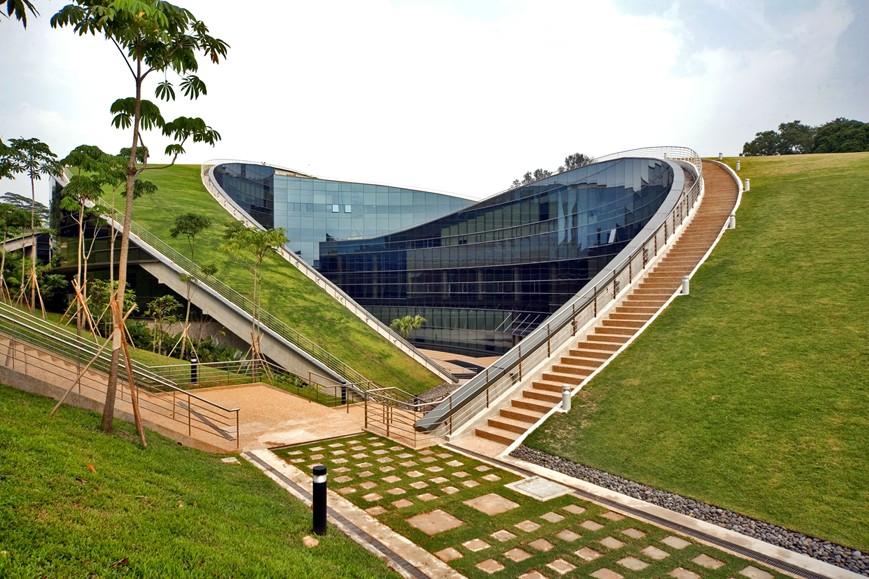Will Greening Theme Parks Kill the Magic?
Posted by Sasha Bailyn on Saturday, November 3rd, 2012
A lush, pastoral English countryside transforms into a steaming, gear-turning industrial city before a live audience of thousands. Shooting and splashing down water slides – a fairly generic summer pastime – becomes an adventure that follows a park-wide narrative centered on Emirati culture. A soda exhibit sweeps visitors into a plot of surveillance and secrecy, taking them on an interactive discovery. What’s amazing about entertainment design is that it can be used to enhance almost any kind of venue or experience, from larger-than-life shows, theme parks, and museums, to even the most mundane of activities such as eating dinner, or going to the bank.
Entertainment design’s versatility allows it to cross the borders of most every technological and artistic discipline. It can adapt to favor the digital, spatial, graphic, or even the natural world, but one of the paths less-travelled by entertainment designers is that of sustainability. After all, have you ever heard of a green theme park? Perhaps not yet, but the options for this are endless: sustainable design construction practices, eco-friendly venues that minimally affect the environment, energy smart or energy producing rides, recycled construction materials, and even re-usable spaces. This is not to say that sustainability should be the theme of future experiences, but green design should become more integral to the process of entertainment design.

It will be interesting to see how future entertainment designers take on this challenge. Maybe our future theme parks will be made of recycled cardboard and our roller coasters will be people-powered, with compost gardens in the food pavilions (…or maybe not). Perhaps a better approach would be to blend the green elements seamlessly into the experience without calling attention to them. But the “green revolution” challenges our old school notions of show design: is it better to blend sustainability into the background, keeping it “back stage,” or will audiences be comfortable with more transparency about the design process? Architecture tends to have more leniencies with candor, revealing structural secrets in appealing and acceptable ways, and, recently, displaying the energy efficiency of a building for all to see. As the world goes green, it seems we become much more comfortable knowing how things work. While we still want to be swept away by adventures and inspiring stories, it may be time for entertainment design to take an innovative turn away from the “keep everything secret” policy of showmanship, and begin to discover ways that revealing the truth can enhance our experience of theme parks, museums, and entertainment venues.
Sasha Bailyn
Editor-In-Chief
sasha@entertainmentdesigner.com



 Sign Up For Our Newsletter
Sign Up For Our Newsletter 



